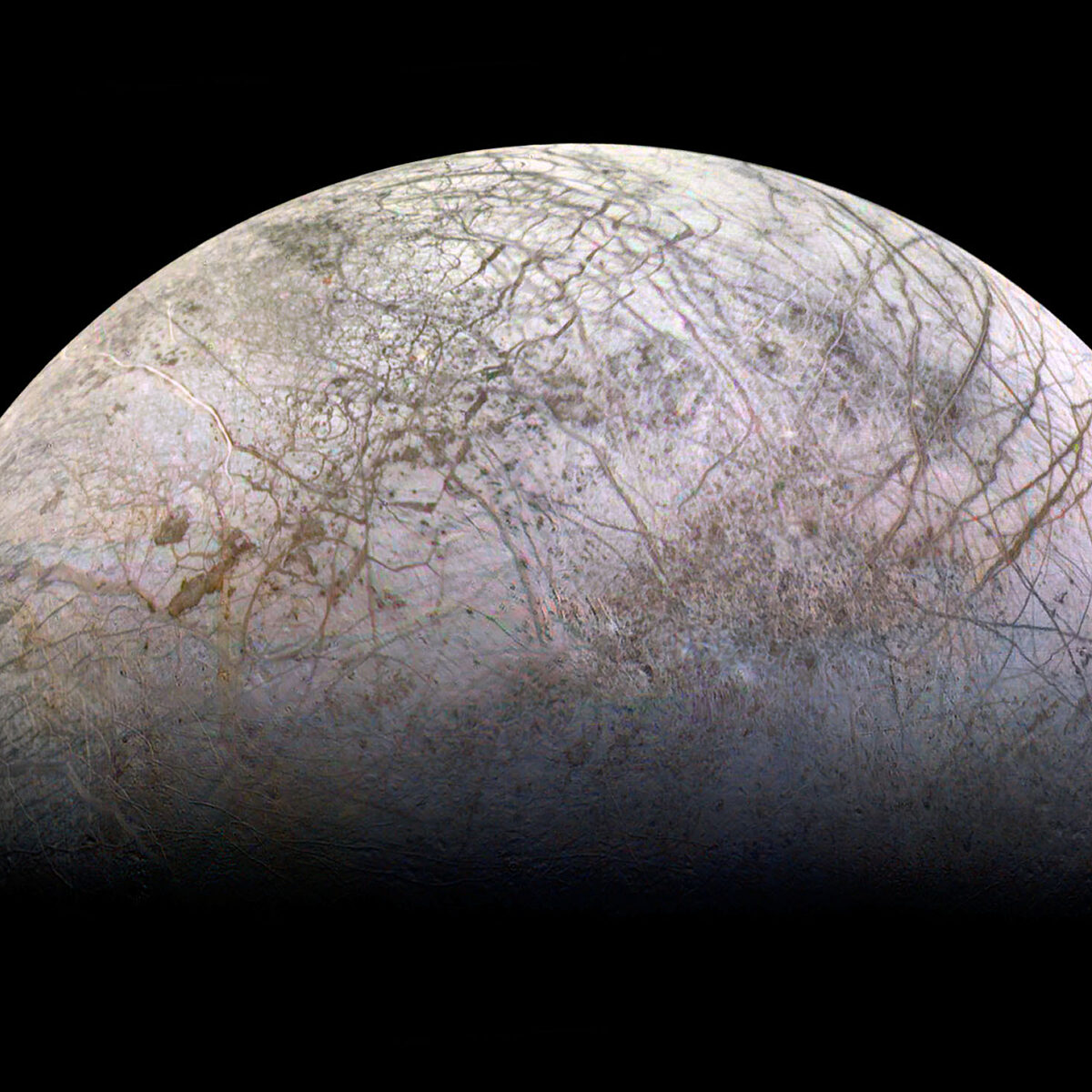All
All
Stories, updates, insights, and original analysis from The Planetary Society.
What are Jupiter’s Galilean moons?
An introduction to Jupiter's moons Io, Europa, Ganymede, and Callisto.
Juice launches on mission to explore Jupiter's icy moons
The spacecraft will explore Jupiter's moons Europa, Ganymede, and Callisto, all three of which may harbor subsurface oceans.
Juice launch and mission preview: What to expect
Juice is ready to launch on a mission to uncover the secrets of Jupiter's icy moons.
Our favorite moons of the Solar System
A brief guide to eight of our Solar System's most fascinating and scientifically promising moons.
By Jove! (Literally)
Jupiter’s moons have always been exciting to explore, and a new era of Jovian moon research is about to begin.
Where are the ocean worlds in our solar system?
Ocean worlds are among the best candidates to search for life.
Proximity and distance
Looking at planets and moons from near and far, and figuring out how to get all the way out there.
Venusian Probes and UFOs
Venus is an intimidating destination for spacecraft, and we’re pretty sure Earth hasn’t yet been a destination for aliens.
Voyager Wide-Angle Views of Jupiter
Last month marked the 40th anniversary of the historic Voyager 1 encounter with Jupiter in 1979.
Moon Monday: Galileo's Galileans
This week it seems fitting to feature a portrait of the Galilean moons by Galileo.
#LPSC2018: Groovy Galilean satellites
The Jovian system is a busy place. The Groovy Galilean Satellites session at last week's Lunar and Planetary Science Conference (LPSC) covered analysis of past mission data, testable hypotheses for future missions, and discussion of the use of ground-based data.
Explore spinnable Saturn and Jupiter moons with Google Maps
Google Maps released several new map products that allow you to see the locations of named features on many solar system planets and non-planets, spinning them around in space with your mouse.
Will Juno’s Instruments Observe the Moons of Jupiter?
It is not easy to observe Jupiter’s moons as more than points of light with Juno, because Juno will never get very close to any of the moons, but as its orbit shifts there will be opportunities to collect data on some of the moons.
Juno has arrived!
For a second time, NASA has placed a spacecraft into orbit at Jupiter. The spacecraft operated exactly according to plan, and Juno successfully entered orbit today, July 5, 2016, UTC
A peek at the JunoCam approach movie
We're now just about 12 hours away from Juno's Jupiter orbit insertion. As anticipation ramps up, NASA has released this sneak peek at JunoCam's approach movie, made of views of Jupiter and its largest moons shot during the final approach, up until about five days ago.
New work with 35-year-old data: Voyagers at Ganymede and Saturn
The Voyager data set is a gift to Earth that keeps on giving. This week, I've seen three great new images processed from this old data set.
LPSC 2016: Icy Satellite Science
This year’s Lunar and Planetary Science Conference devoted two oral presentation sessions to questions related to icy satellites in our solar system. Jessica Noviello reports back from the conference.
An internal ocean on Ganymede: Hooray for consistency with previous results!
A newly published paper confirms a subsurface ocean at Ganymede. An ocean there was already suspected from its magnetic field and predicted by geophysics; new Hubble data confirms it, and even says it is in the same place we thought it was before. Such consistency is rare enough in planetary science to be worth celebration.
Flawed Beauties
More examples of imperfect--but tantalizing--images from deep space.
JUICE at Europa
Europe's JUICE spacecraft will provide us with a detailed regional study of this icy moon of Jupiter.


 Explore Worlds
Explore Worlds Find Life
Find Life Defend Earth
Defend Earth


 Sun
Sun Mercury
Mercury Venus
Venus Earth
Earth Mars
Mars Jupiter
Jupiter Saturn
Saturn Uranus
Uranus Neptune
Neptune Small Bodies
Small Bodies
















